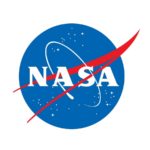Revealing and Reducing Ocean Evaporation
The NASA Energy and Water cycle Study (NEWS) has focused on developing observational climatologies of water and energy cycle components to serve as a baseline in the development of improved predictive capacity of hydrologic cycle changes. Recent progress within NEWS working groups has exposed large uncertainties in both absolute magnitude and variability of ocean evaporation estimates. In particular there remain large differences between several ocean evaporation products. Advancing the understanding of water and energy cycle variability through addressing the NEWS grand challenge is necessarily intertwined with understanding the quality of observational records and their limitations.

We are working with a process-level approach to provide enhanced error analyses of ocean evaporation estimates and employ them in the extension and improvement of an ocean surface evaporation dataset currently exploited within NEWS working groups. Our previous NEWS efforts have shown identification of weather regimes using observed cloud properties is an effective technique by which to stratify ocean evaporation variability. Accuracies of near-surface parameters needed to estimate ocean evaporation using microwave remote sensing are strongly affected by cloudy and rainy conditions. Thus, there is further impetus to continue the use of cloud-based weather regimes in characterizing the error properties and uncertainties of near-surface parameters and ocean evaporation.
Using weather regimes we will quantitatively intercompare several ocean evaporation datasets amongst one another and against observations. Differences between products will be assessed with respect to both difference in sampling of weather regimes and differences in the characteristics of the regimes themselves. These analyses will aide both algorithm developers and NEWS investigators through informing under what conditions ocean evaporation estimates are most reliable and most suspect.
Funding Agencies
The National Aeronautics and Space Administration funded this research.

Partners/Collaborators
This is a joint project with Institution Number One, College Number Two, Organization Number Three, and Corporation Number Four.
Related Links and File
Research Papers
- A link